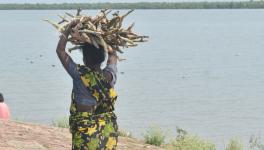How to Help Heat-Stressed Bees and Protect Global Food Supply
Heat stress is shifting the delicate balance between plants and pollinators but climate adaptation is still possible
As summer ends for some and spring blooms for others, bees and butterflies are doing their best to pollinate the flowers that become the food we eat. They, and a host of other animals and insects from bats to beetles and bees, play a vital role in ensuring our supermarket shelves are stocked with nutritious fruit and vegetables.
Meanwhile, plants too are doing their bit to offer these busy pollinators some "floral rewards," meaning flowers filled with a lot of high-energy nectar and precious pollen.
But like us, plants and pollinators are feeling the extreme heat of hotter summers. Flowering crops from canola to blueberries are struggling to create the quality and quantity of nectar and pollen to attract bees, and therefore to reproduce.
And that's a vicious cycle because vital pollinators might also battle to repopulate as they're forced to forage longer for adequate nutrients.
While cutting fossil fuel use is the necessary long-term solution to extreme heat, a host of adaptation measures can help lessen the sting.
Keeping bees and crops happy in the heat
Crop shading is one strategy to regulate temperatures during the peak of summer. It has been shown to improve yields in flowering vegetable crops, implying that pollen production has been maintained.
Applying layers of mulch to the soil also helps retain water and reduce soil temperatures during extreme heat. The method has helped maintain pollen development in squash, for example, and the attendant health of squash bee populations.
Meanwhile, experts say it is better to limit fertilizer, and hence growth, during extreme heat so energy is directed instead at self-preservation — and providing quality nectar for bees.
Planting genetically diverse crops also helps plants evolve to become more climate resilient, according to researchers. This is an effective strategy for sustaining pollinator diversity, controlling pests and diseases and maintaining soil health and biodiversity.
Plants affected by heat are struggling to produce enough pollen to go around
How does extreme heat alter nectar and pollen?
Around 80% of crop and wild-flowering plant species in the European Union are highly dependent on animal pollination. Some €3.7 billion ($3.8 billion) of the EU's annual agricultural output is directly dependent on pollinators like bees.
"Temperature rise and water stress affect both the quantity and composition of floral resources in a bee-pollinated species," said the authors of a 2021 study on how climate change is shifting bee-crop interactions.
Focused on the impact of heat and water stress on borage, or star flower, a herb grown widely across Europe, the study observed lower sugar concentration and amino acid content in the nectar but also an 80% reduction in nectar volume.
Less sugary nectar means fewer "flower rewards," meaning pollinators like honeybees are more likely to give the plant a pass.
Bee reproduction is dependent on pollen
Meanwhile, decreased sugar quantity can also negatively impact the flight performance of bees, say the researchers.
Bees tend to favor sugary nectar over protein-rich pollen when foraging as it provides the carbohydrates and energy to fly, notes Jenna Walters, a Ph.D. candidate at Michigan State University, who is studying bee-plant interactions.
![]()
Pollen is not only used to fertilize plants, it's also used to feed bee larvae, which is one of the key problems of heat-stressed plants producing less of it.
Limited pollen resources could not only mean fewer offspring; it can also cause an imbalance in the number of males and females that are born, according to Walters.
"When pollen resources are low, there can be a higher number of male brood produced than female brood," she said.
Since females are the "primary pollinators" of plants and crops, subsequent generations are likely to dwindle. Bee population numbers also stand to be affected "as fewer females are present to mate and lay eggs," Walters said. As female "pollination services" are reduced, the cycle of declining crop yields will continue.
Creating heat-resilient agricultural systems
As temperatures continue to rise, there is an urgent need to develop heat-resistant crops and strains of pollen to keep bees busy.
Some flowering plants are simply more resistant to heat than others, found one study showing how nectar content is less impacted in specific wildflowers suffering water and temperature stress.
Wildflowers that are more climate resilient can then be planted in the vicinity of crops to attract pollinators, researchers said, having demonstrated how crop yields can rise when bordering wildflowers promote bee visitation.
Meanwhile, scientists are also developing heat-resistant strains of pollen and stress-tolerant plant genes that maintain reproductive health.
For Walters, better understanding of the impact of heat stress on crop-pollinator interactions is fundamental to creating what she and her co-authors call the "heat-resilient agricultural systems" of the future.
Edited by: Tamsin Walker and Jennifer Collins
Get the latest reports & analysis with people's perspective on Protests, movements & deep analytical videos, discussions of the current affairs in your Telegram app. Subscribe to NewsClick's Telegram channel & get Real-Time updates on stories, as they get published on our website.

























